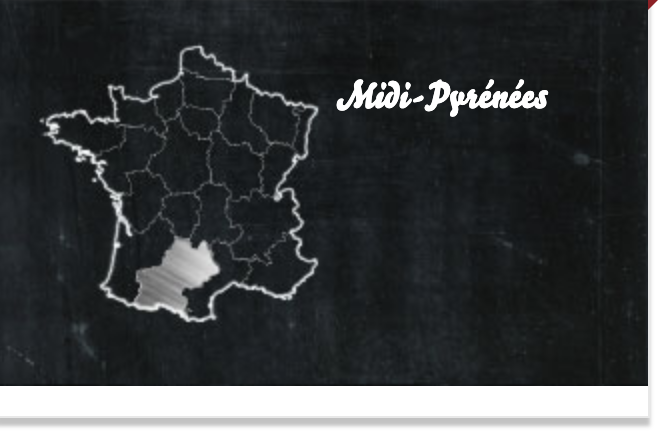Life has never been easy in the Causses, a region where “nothing grows, neither a single vine nor grain of wheat”. However, this landscape was generous enough to give the region the most prestigious of the blue-mould cheeses: Roquefort.
Roquefort

Origin
Characteristics
– AOC since 1925.
– Blue-mould cheese.
– 52% fat content.
– Cylinder approximately 20 cm in diameter and 8.5-to-10.5-cm thick.
– It weighs between 2.5 and 2.9 kg, but is also found in portions weighing 25, 33, 100, 160, and 200 grams.
– This blue-veined cheese is surrounded by a moist, white, shiny rind.
– Production: 19,000 tonnes.
Gastronomie
Roquefort’s unique flavour, both powerful and delicate, is deliciously highlighted by Porto and Sauternes. A mainstay of every cheese plate, it has been able to captivate the greatest chefs and has inspired numerous recipes.
Production
White cheeses that are merely two days old are brought to the natural caves of Roquefort-sur-Soulzon, where they will be aged for three months to the rhythm of the breathing of the fleurines in the largest cheese cave in history and the only place where Roquefort is aged in the entire world.
Each cave has its own personality and charm, but most of all, each cave has a micro-climate that results in an ageing process that is unique to each one. Each of them, through its own magic, develops its own family of Roquefort with its own special flavours.
Roquefort was a precursor in terms of the AOC: in 1411, Charles VI signed a charter granting the residents of Roquefort “a monopoly on the ageing of the cheese as it has been practised since time immemorial in the caves of said village.” The Lacaune sheep, with its haughty demeanour, small head, and horizontal ears, accounts for 80% of the milk production necessary for making Roquefort.
Starting in the middle of the 19th century, traders gathered together and formed the Société Civile des Caves Réunies (Civil Society of United Caves), which quickly underwent a large expansion. However, production streamlining and innovations to manufacturing techniques went hand in hand with respecting traditions.
It is difficult to know whether the first person who ate Roquefort was a Bronze Age shepherd or a Gallo-Roman herdsman, or whether Roquefort really is the cheese mentioned by Pliny the Elder, but one thing is certain: it was Charlemagne’s favourite cheese. He tried it one day at the monastery of Vabres. While removing the mould with the point of his knife, he was chastised by an abbot: “My lord, you are removing the best part.”
Production Area
The traditional milk collection zone was the former province of Rouergue, which is now spread over the Aveyron department and adjacent departments. Many herds of ewes find their preferred pastures on the Causses, a series of vast limestone plateaus split by valleys where wild and fragrant grasses thrive.